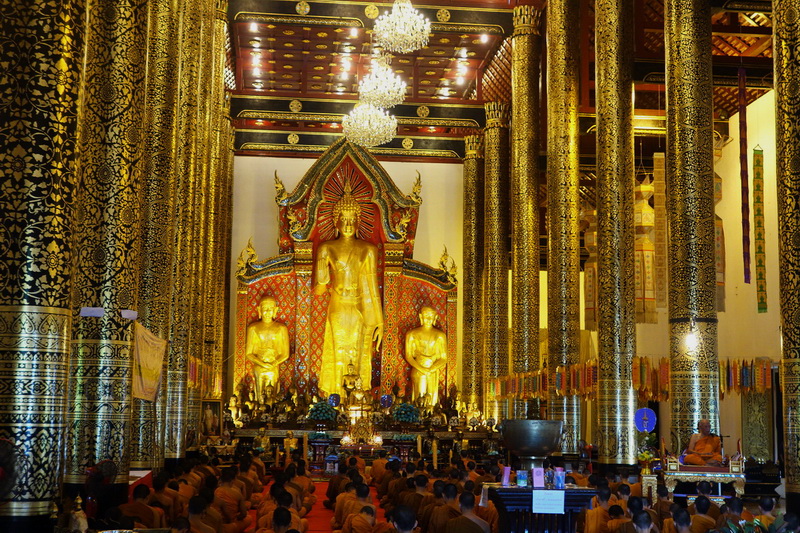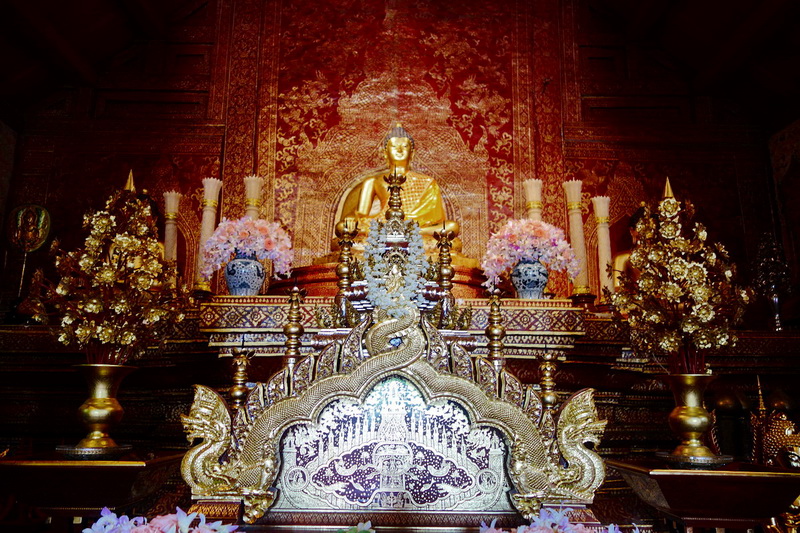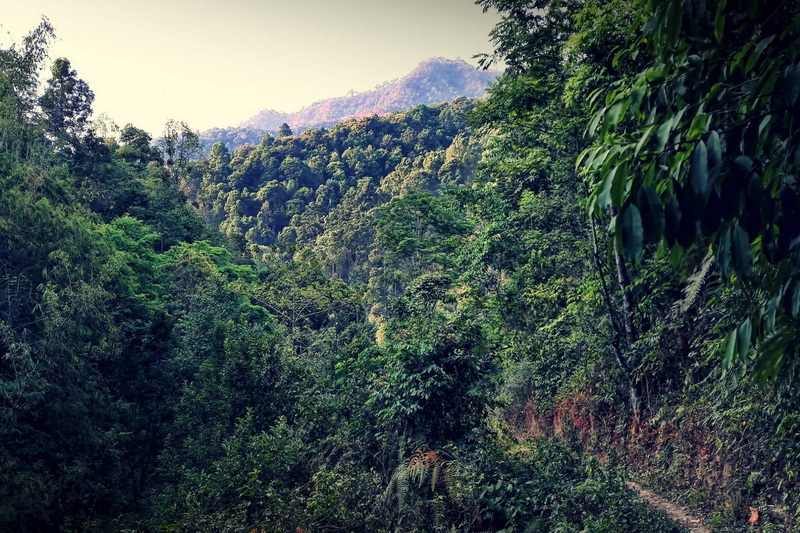Wat Chedi Luang ‘Travel back to the past with this historic temple’

Chiang Mai, one of Thailand’s most historic towns, is renowned for its rich cultural heritage and architectural marvels. The best way to delve into the city’s past is through its architecture, which tells stories of different eras and peoples through unique art styles. Each structure reflects the lifestyle, ideas, and behaviors of the people who built it. Among these architectural treasures, Wat Chedi Luang stands out as a must-visit landmark.
Discover the Splendor of Wat Chedi Luang: Chiang Mai’s Historic Gem
🏛️ Unveiling the Historical Significance of Wat Chedi Luang
Located in the heart of Chiang Mai, Wat Chedi Luang, also known as the “Grand Stupa” or Wat Chotikaram, is an iconic symbol of the city’s wealth and power. Construction of Wat Chedi Luang began in 1391 under King Saen Muang Ma, originally intended to enshrine his father’s ashes. Though the king initiated this grand project, completion took many decades; it was King Tilokaraj in the mid-15th century who finally finished the great stupa, which then stood at around 80‑82 meters high with a base spanning roughly 54‑60 meters. Over time, an earthquake in 1545 caused the top 30 meters to collapse, leaving the chedi at roughly half its original height. Restoration efforts, particularly in the 1990s with support from UNESCO and Japan, sought to preserve its remaining glory while raising debates over preservation style.
✨ What Makes Wat Chedi Luang Unique
What truly sets Wat Chedi Luang apart from other temples is its layered spiritual and architectural complexity. It’s not just a single chedi: the temple grounds include several structures such as the main viharn with its “Eighteen‑cubit Buddha” (Phra Chao Attarot), city pillar shrine (Lak Mueang, “Sao Inthakin”), smaller viharns, and various shrines. The combination gives visitors insight into Lanna architecture, ritual practice, and the evolution of worship over time.


Viharn Luang and Phra Attharot: Spiritual and Architectural Wonders
The main viharn, known as Viharn Luang, was constructed in 1928 and houses the impressive Phra Attharot Buddha image. This towering statue, cast towards the end of the 14th century, stands at 18 cubits tall and is a focal point of worship. The statue’s Abhaya mudra symbolizes protection and fearlessness. The smaller viharn, noted for its intricate wood carvings and Naga-guarded stairway, adds to the temple’s architectural splendor.
The Massive Chedi: A Testament to Lanna Glory
The centerpiece of Wat Chedi Luang is its massive chedi, originally built to a height of 85 meters to enshrine the ashes of King Saen Muang Ma’s father. This grand structure, completed in 1475 during King Tilokarat’s reign, was once the tallest building in Chiang Mai. Although a 1545 earthquake reduced its height to about 60 meters, the chedi remains awe-inspiring. Restoration efforts in the 1990s preserved its grandeur, and its four sides are adorned with mythical Naga serpents and stone elephants.


The Sao Inthakin: Chiang Mai’s Protective City Pillar
Another significant feature of Wat Chedi Luang is the Sao Inthakin, or City Pillar, housed in a small building within the temple grounds. Local belief holds that this pillar protects the city. Accompanied by three massive Dipterocarp trees, also believed to be city protectors, the Sao Inthakin is central to annual ceremonies aimed at ensuring Chiang Mai’s prosperity and well-being.
🎯 Key Activities & Experiences
When visiting Wat Chedi Luang, there are several activities you shouldn’t miss:
- Monk Chat – an opportunity to sit and talk with novice monks, where questions about Buddhist teachings, the daily life of monks, and local traditions are welcomed. This is often one of the most memorable ways to connect with the spiritual side of Chiang Mai.
- Offering flowers, incense, and observing rituals – devotees bring marigolds, jasmine, candles, and incense to pay respects at the chedi base, in the viharn, and at smaller Buddha images throughout the complex. These acts of devotion add living vibrancy to the ancient stone and brick.
- Exploring sacred relics and ancient architecture – Visiting the city pillar shrine, viewing the reclining Buddha pavilion, walking around the ruined chedi and its naga‑guarded staircases, and studying the old carvings and stucco work. For those interested in Important Temples in The North of Thailand, this richly layered site is a treasure trove.
- The temple grounds include a Reclining Buddha, a bell tower, and Wat Phan Tao, another temple located nearby.
Wat Chedi Luang can easily be included in Chiang Mai day tours, especially those focused on history, culture, and temple circuits in the Old City. It provides both spiritual insight and architectural wonder—all within walking distance of other top heritage sites.


🧭 Facilities, Tips & Best Time to Visit
Facilities are fairly basic but adequate: areas for removing shoes, shaded pavilions, vendors around the periphery selling flowers and offerings, and information signs in Thai and English. You’ll want to dress respectfully (no sleeveless tops, short shorts) especially in the viharn and sacred areas.
Best time to visit is early morning or later in the afternoon — temperatures are cooler, light is softer, and the crowds are thinner. Also, avoid midday heat. If possible, try to align your visit with a festival (such as the Sao Inthakin (Inthakhin) Festival in May) to witness the temple in its fullest cultural expression.
🚕 How to Get There
Wat Chedi Luang is centrally located inside Chiang Mai’s Old City. If you’re staying in or near the Old City, it’s walkable. Taxis, tuk‑tuks, or motorbike taxis can drop you off at the main entrance. The temple is bordered by Phra Pok Klao Road and is just south of Ratchadamnoen Road. Entrance for foreigners is nominal. Open daily.
Nearby Places
Beside of Wat Chedi Luang, there are still many more gorgeous temples in Muang County of Chiang Mai, which you may want to visit next.
Wat Phra Singh (Temple of the Lion Buddha) is an important Buddhist monastery and temple on the west side of Chiang Mai, Thailand. Founded in the 14th century, it houses two medieval Buddha statues. The recently restored Viharn Lai Kham is a classic example of a Lanna style viharn and was built to house the Phra Sihing image enthroned inside.
The Wat Chiang Man is the oldest temple in Chiang Mai and goes back all the way to the founding of the city in 1296. When King Mengrai decided to build a new city and make it the new capital of the Lanna Kingdom, he build the Wat Chiang Man as the first temple of the new city on the site he used to supervise the construction of Chiang Mai.











[…] Buddhist Manuscript Library and Museum at Chedi Luang temple is a fascinating destination for those with a deeper interest in Theravada Buddhism and palm leaf […]